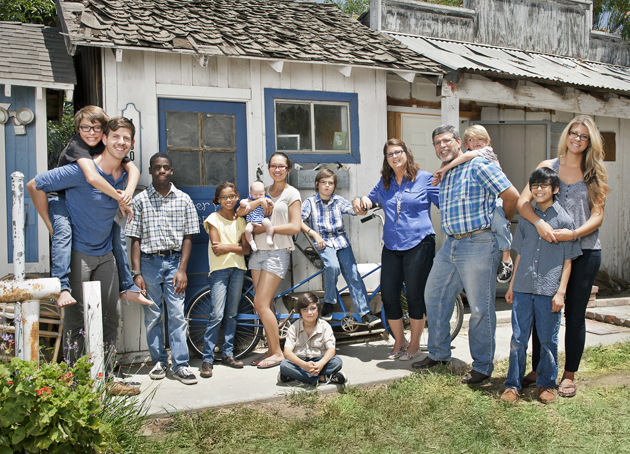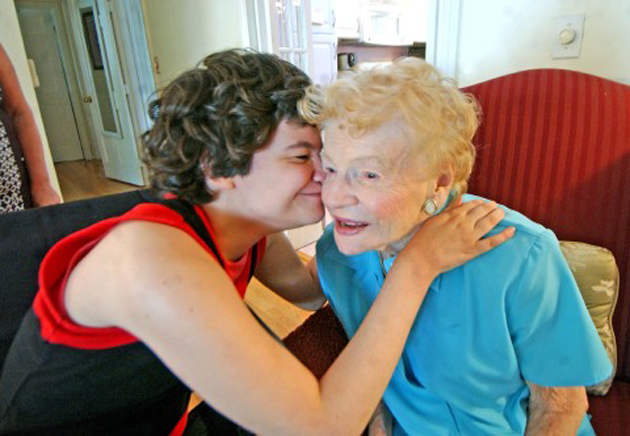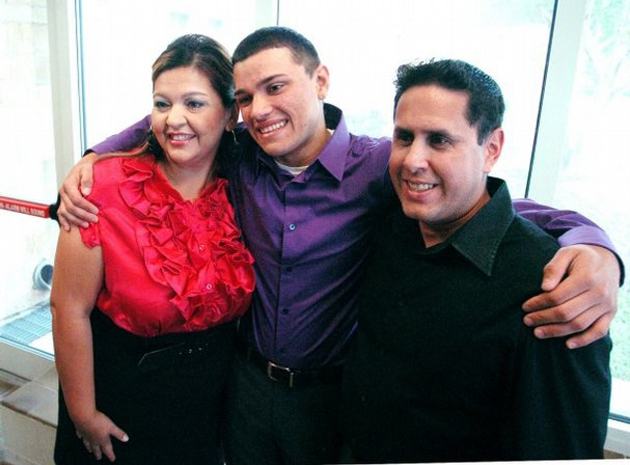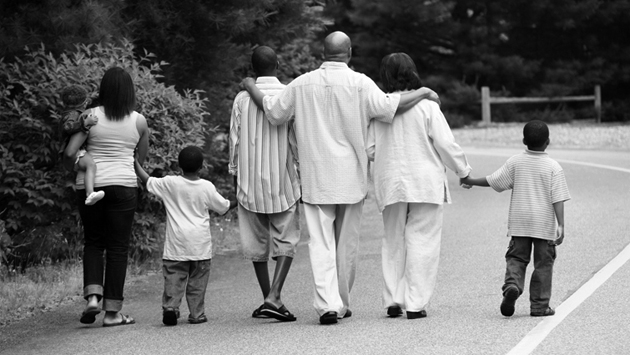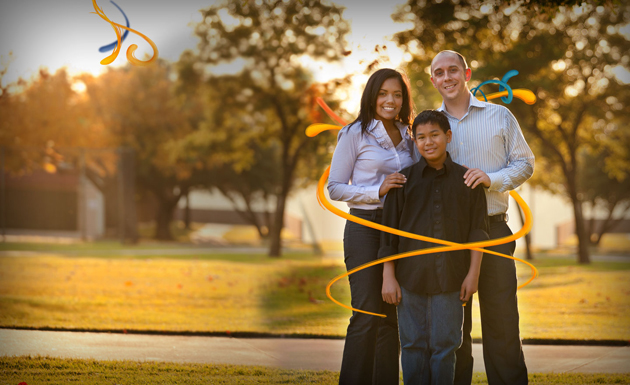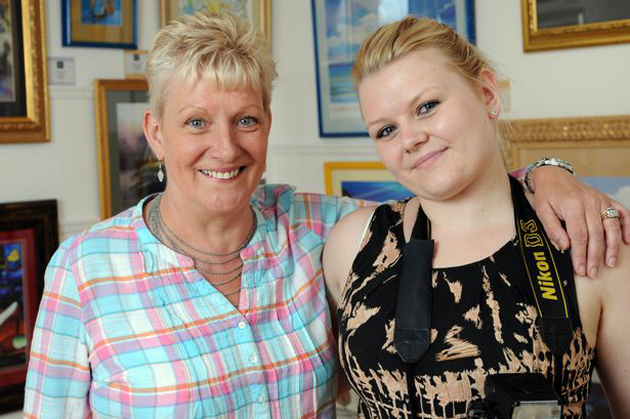These 10 amazing foster care families have dedicated their lives and opened their homes to help as many needy foster children as possible. The foster care system has been long and harshly criticized. There are still multiple flaws that will continue to affect the lives of the children within it. However, fostering has undeniably saved and positively changed innumerable lives.
Much of the credit for this is due to the hundreds of foster care families and parents who genuinely care about making a difference in the lives of children. These foster children desperately need love and affection, and these families have dedicated their lives toward making sure they can help as many needy kids as possible. Here are ten amazing foster care families whose work will not soon be forgotten by those they touched.
The Hasemeyers
Jaci and Eric Hasemeyer weren’t always super-parents with a larger-than-life goal to help out as many needy kids as possible. They were a typical American family with three kids, three dogs, and regular jobs. Jaci Hasemeyer taught a gym class at the local elementary school. In her spare time, she clipped coupons for the skating rink to give her students rewards for good sportsmanship. But one day in 1996, one of her students waited until all the other kids had left to return his coupon. Since he was a foster child, he explained that no one would take him to the skating rink. He didn’t want Jaci Hasemeyer to waste her coupon on him.
“My heart just broke,” Jaci Hasemeyer recalls of the moment. She wanted to help other kids like him and teamed up with her husband to become foster parents themselves. In two years, their first children arrived. They were two sisters and one half-brother, all under ten. It’s over ten years later, and the Hasemeyers have fostered over 30 children who went on to find loving families of their own.
The Hasemeyers have fostered children for a few days to a few years to permanently adopt some children who come to their families in need. Besides showing some much-needed love to dozens of children, the Hasemeyers also inspired four of their friends to become foster families as well. And they didn’t stop there: year after year, the Hasemeyers continue to participate in fundraising events to help support foster and adoptive children in their area.
Grace Cyr
Meet Grace Cyr. She is a 93-year-old woman who proves that one indeed never loses their parental instincts. She has had 98 foster kids and had a goal of reaching 100. However, she gave up that goal when she adopted a special needs little girl named Kayla who would need “complete attention and care” for “the rest of her life.”
“I wouldn’t give her up,” Cyr asserted, “No way could anyone take care of her the same way.”
Cyr has been fostering through The Home for Little Wanderer’s Intensive Foster Care Program and helped 98 children over the past 53 years. After failing to become a nurse as she had always dreamed due to lack of college funding, Cyr followed in her own daughter’s footsteps and became a foster parent herself. Her children were usually newborns requiring long nights and a lot of extra attention. When Cyr wasn’t taking in 4-day-old babies, she typically looked after children with emotional or physical issues.
After fostering 98 kids, some of which she still keeps in contact with even after years of separation, Cyr spends most of her time with her adoptive daughter. Kayla is a 24-year-old woman with cerebral palsy and a seizure disorder that requires her to wear a diaper and leave her unable to walk or talk. Kayla has been with Grace Cyr since she was five years old.
The Cavazos
Damien Cavazos was in the foster care system for almost 18 years. Given up as a baby, Damien waited patiently for a home until the system was ready to phase him out. Child protective services employee Rebecca Cavazos had been working with Damien for almost a year since the moment she noticed him sitting alone at an adoption event. “Nobody wants me,” he had told her, “They want the little ones.”
There was no adoptive family insight with only 24 hours left until his 18th birthday and his release from the foster care system. So, Rebecca Cavazos took action. She went directly to her boss’ office and announced that she would adopt Damien into her family, including her husband and three other children.
“It was a good birthday wish,” Damien said.
Barry Farmer
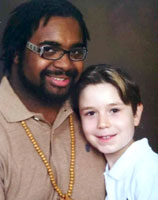
It’s unusual to hear of a single 20-something male becoming a foster parent on his own, but that’s exactly what Barry Farmer did. Farmer began becoming a foster father when he was 20 years old. After he and his siblings were raised by his grandmother because his mother was too negligent in caring for them, Foster became a behavioral counselor who works with emotionally disturbed children.
“I’ve never been the type of guy to a party or go to the club,” Famer explains, “I wanted a family. I wanted a child to take care of and to show them different things and share experiences with them before I got too old.”
At 21, Farmer was placed with his first child: a teenager who arrived on his 16th birthday and was considered “high risk.” He was described as “doing well” but moved to a foster home after eight months due to his unique needs.
A few months later, 7-year-old Darrell arrived. He soon started calling Farmer “dad” and never left. Still, he was almost forced to when his mother’s parental rights were terminated, and he was temporarily placed with an adoptive family whom caseworkers thought would suit his special needs.
“I could see the hurt in his face,” Farmer said. However, Darrell returned to Farmer after only a week. Farmer and Darrell are doing well, and Farmer says he is considering adopting two more children.
Sheena Munsch
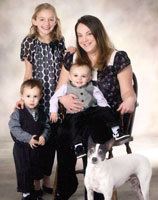
In another heartwarming tale of a single young 20-something becoming a stellar foster parent, Sheena Munsch set out to do just that when she was only 15 years old. She then saw some of the broken homes foster children came from when she tagged along with her sister, a social worker, on some of her home visitation appointments.
“I remember the sun was shining, it was bright out, but it was a whole lot different when I walked into their home,” she recalls.
Filth, drug use, insect infestations, rotten food, and disgusting smells accosted her senses inside the squalid homes. But, it was something she never forgot, and Munsch began her path toward becoming a foster parent at 18 when she got her first job as a police social worker.
Munsch was licensed as a foster parent when she was 21 and focused on older children she saw as having a higher need. She adopted her first child at 23 when the strain of “having kids coming and going all the time” left her wanting more. She has since adopted two more children. Munsch has two brothers under the age of 5 and has a foster child living in her house. Munsch continues to work for the mental healthcare system, is working on her master’s degree, and says she still considers herself young at 26 with four children.
Dueholm Family
The Dueholm family already had a child when they decided to begin fostering. “Somebody has to do it,” Ben Dueholm mused as they discussed adoption. They wanted to help children.
In less than a year, they received their first foster child: 1-year-old Sophia, who had been taken from her parents after social workers took her into temporary emergency custody. She had a broken leg.
The Dueholms struggled with Sophia and her medical issue because they were a low-income family depending on government programs, which they describe as less-than-efficient, to help them out. However, after doggedly ensuring that Sophia’s leg was taken care of by a doctor who tried to weasel his way out of allowing the family to pay with Medicaid and persistently applying for daycare through government programs which required heavy loads of paperwork and long wait times, Sophia finally got all the help she needed.
Benjamin Dueholm wrote a long and informative article for The Washington Monthly, which details their struggle as well as the bureaucratic issues surrounding fostering and low-income families.
Virginia Home for Boys and Girls
John and Cory Richardson-Lauve were the first couple to live at the Virginia Home for Boys and Girls, a foster home that has provided homes for over 20,000 kids as teaching parents. For ten years now, the couple has been using the praised and acclaimed Teaching-Family Model to help countless boys and girls open up, receive love, and eventually find “forever homes.”
“[The method teaches that] there are no bad people, just bad teachers,” Cory explains of the method. “It’s very optimistic, which resonated with John and me.” After spending seven years as a teacher, Cory now trains other teachers while her husband works with ChildSavers, a licensed clinical social worker and therapist. The couple has dedicated their lives to their cause, so far helping hundreds of children and hoping to train others on how to do the same effectively.
Ashley Walker
“Unlock Your Dreams” reads an inspirational sign inside Tulsa’s first home for girls, The Manna Girls’ home, opened by OSU graduate Ashley Walker in 2013.
“Every time I walk in through the door, it’s a miracle, and I’m excited. I love it,” Walker says. The Manna Girls’ home fosters girls who have been abused, suffer from emotional trauma and issues, and are abandoned or removed from their birth families. It accepts girls 12-17 years old and has high hopes for the future despite only being open for less than a month.
Walker was inspired to open the home after realizing that Tulsa had a boys’ home but lacked girls. Walker focuses on helping her girls with their day-to-day needs, helping them find jobs and hone life skills, and directing them on taking care of financial issues. She hopes to eventually open a larger campus-like facility with a particular area for pregnant girls. Her home runs entirely on donations.
John and Dorothy Clelland
John and Dorothy Clelland were serious about giving a loving home to their foster child, Amy, who arrived at their house seven years ago looking shy and sad. Afflicted with type 1 Diabetes and discouraged from emotional problems that caused her to move quickly from home to home, the Clellands adopted her permanently. They ensured that the entire family was present for Amy’s 13 birthday party.
“We made such a big thing of it,” Dorothy said of the party, “and we took her for a flying lesson and gave her loads of things she’d never had before.”
Seven years later, the Clellands continue to love Amy in a big way. Not only have they nurtured her passion and natural talent for photography, but they built her art gallery, called the Port Gallery, which features her work. Visitors can stop by to look at her framed photographs and the works of other local artists. In addition, the Clellands are currently fostering a second child.
Paul Lambros
In an atypical story about foster families, Paul Lambros has been avidly trying to help the homeless of Plymouth, Seattle, for over 20 years. He’s the executive director of the Plymouth Housing Group and works hard to ensure that the facilities are operating as efficiently as possible, helping as many homeless as they can.
Because of Lambros’ dogged work, the Plymouth Housing Group has become “one of the most successful models for ending homelessness in the city.”
PHG owns and operates 14 properties and 19 retail tenants in Seattle, providing over 1,000 housing units on a budget of approximately $15 million per year. Their success is greatly attributed to their method of locating housing. By capitalizing on houses that are considered subpar to developers due to poor location or inconvenient costs but are close to public transportation and other services, PHG has been able to renovate run-down places and turn them into homes for the needy and often ignored.
“We are permanent, supportive housing,” Lambros said, “The goal is to keep them in housing, instead of in and out of the sobering center, or in and out of jail, or in and out of shelters.”
Lambros draws his inspiration from growing up with drug-addicted parents who died in their early 40s and living in a foster home since he was seven years old.
Foster Care Families
These foster family examples are of amazing homes that are filling the need for foster care families. If you are interested in becoming a foster parent, check with your state health and human services department. The programs are administered on the state level and differ from state to state. They have information on foster care license requirements, foster care training, and how to apply to be a foster parent.
Additionally, the federal government has some information on the Child Welfare website. Social Workers interested in foster care can check out our best programs for child services. For all the families who have opened their homes to foster children – thank you!
Related:
- 25 MSW Programs For Child Welfare Careers
- Best Online LCSW Programs
- 50 Best CSWE Accredited Online Bachelor’s
- Top 25 Accredited MSW Programs
- 25 Accredited Online MSW Degree Programs
- Top 25 Best CSWE Accredited Online MSWs
- What are Jobs in Foster Care and Child Welfare?
- Is a Degree in Social Work Worth it?
- 18 Social Work Specialties and Specializations
- Social Work Grants, Scholarships and Loans



